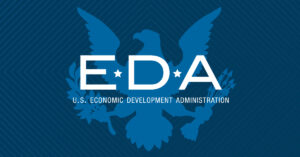From October to December 2023, the US economy expanded at a robust annual rate of 3.3%, defying expectations as Americans continued to spend generously, undeterred by high interest rates and elevated prices that have caused widespread frustration. The Commerce Department’s report highlighted a slowdown from the previous quarter’s 4.9% growth rate but still showcased the impressive resilience of the global powerhouse economy, with GDP growth exceeding 2% for the sixth consecutive quarter. The driving force behind much of the growth last quarter was consumer spending.Throughout 2023, the economy experienced a growth of 2.5%, a noticeable improvement from the 1.9% growth in 2022.
As the November elections approach, the economic landscape will play a critical role in shaping public sentiment. Recently, Americans have started to view inflation and the economy more positively, a shift that could bolster consumer spending, drive economic growth, and influence electoral outcomes. A notable increase in consumer sentiment, as reported by the University of Michigan, marks the most significant uptick since 1991.
Optimism is growing around the Federal Reserve’s strategy to achieve a “soft landing” by adjusting borrowing rates to temper growth, employment, and inflation without triggering a recession. Despite reaching a four-decade peak in 2022, inflation has been on a steady decline, avoiding the severe job cuts many economists anticipated as necessary to curb price increases.
A year ago, the economic forecast appeared much more grim. By April 2023, the Conference Board had nearly guaranteed a US recession within the next 12 months at a 99% likelihood. Despite a significant slowdown in inflation, prices in the US are still nearly 17% higher than pre-pandemic levels, leading to widespread American frustration. This scenario poses an essential question for voters: Will the significant reduction in inflation outweigh the continued high price levels compared to three years ago? The Fed initiated a series of rate hikes starting in March 2022 to address the inflation resurgence, culminating in July of the same year with a benchmark rate of approximately 5.4%, the highest since 2001.
These adjustments have effectively slowed inflation from a 40-year high of 9.1% in June 2022 to 3.4% recently, marking a notable improvement yet remaining above the Fed’s 2% goal. This progress has been achieved with minimal economic disruption. The job market has remained robust, adding an average of 225,000 jobs monthly over the past year, with unemployment staying below 4% for 23 consecutive months, a record not seen since the 1960s.
The job market has cooled slightly, reducing the pressure on businesses to increase wages and subsequently raise prices. This cooling has occurred mainly through reduced job postings rather than layoffs, a strategy adopted by companies cautious not to lose workers after the economic surge post the 2020 pandemic recession.
The economy’s resilience is partly attributed to the strong financial position of consumers post-pandemic, bolstered by government stimulus checks. This has enabled continued spending despite rising costs and interest rates.
Some economists predict a potential economic downturn in the near future as pandemic savings dwindle and borrowing becomes more expensive. However, recent government reports of increased consumer spending in December suggest a positive conclusion to the holiday season. Joe Brusuelas, RSM’s chief economist, believes consumer spending may be even stronger than reported, suggesting that the official data may not fully capture the holiday surge in travel and other services.




